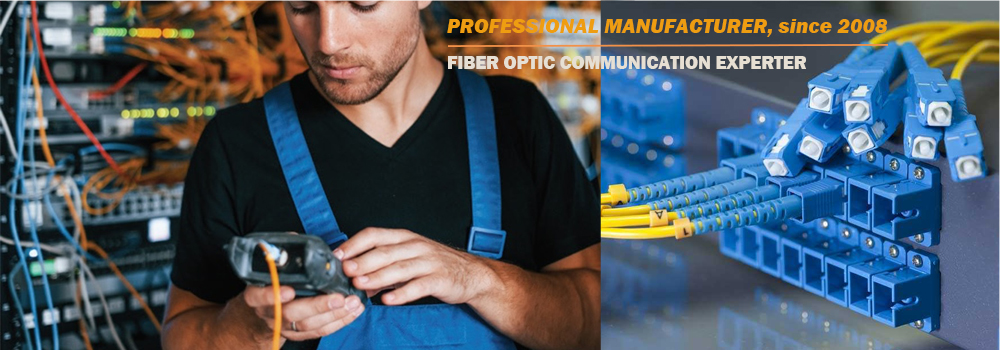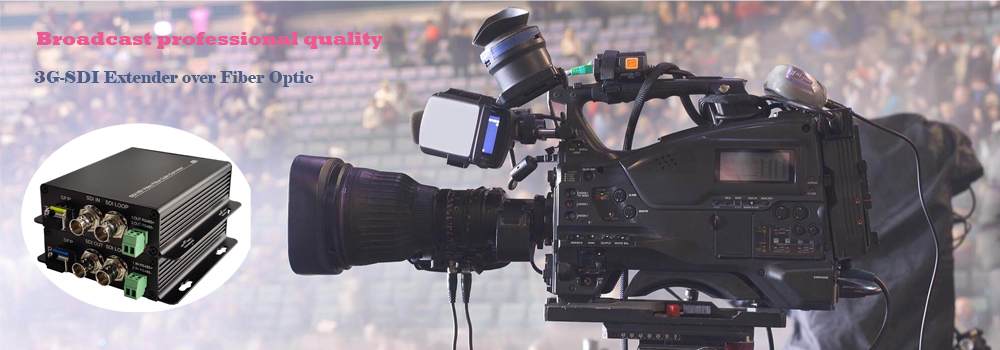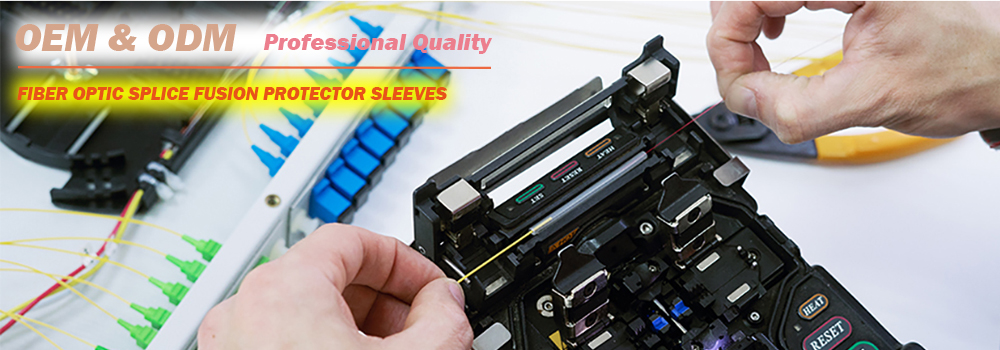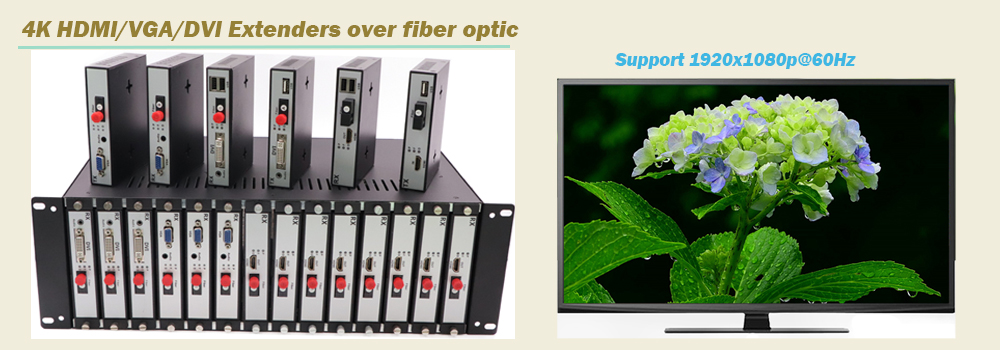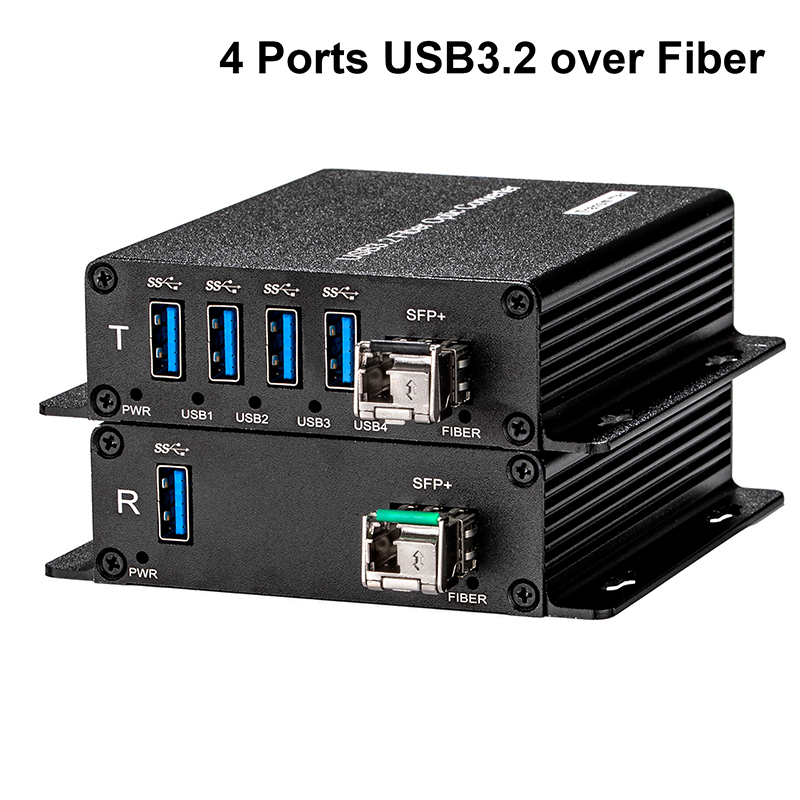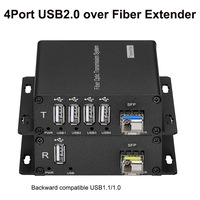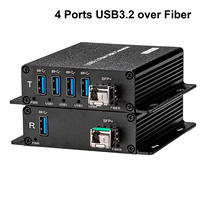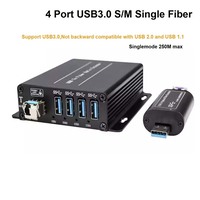Product
Contact us

Sales manager:Tom Zhan
Tel:+0086 13632658537
Skype: zxp94520181
Whatsapp :+86 13632658537
Wechat: zxp94520181
Email:tom.zhan@primeda-telecom.com
www.primeda-telecom.com
USB to Fiber Extender
4Port USB3.2 Fiber Optic Extender
PMD-4USB3.2-SFP-250m
This unit extends 4-channel Super Speed Plus USB3.2 signal through one-core fiber optic cable, transmission distance up to 250 meters by single-mode fiber. ( Note: No support multimode) .Backward compatible with USB3.2 Gen 1 (3.0),not compatible with USB2.0 and USB1.1
OEM, Custom made is acceptable. Contact us if need.
OEM, Custom made is acceptable. Contact us if need.
Description:
NOTE: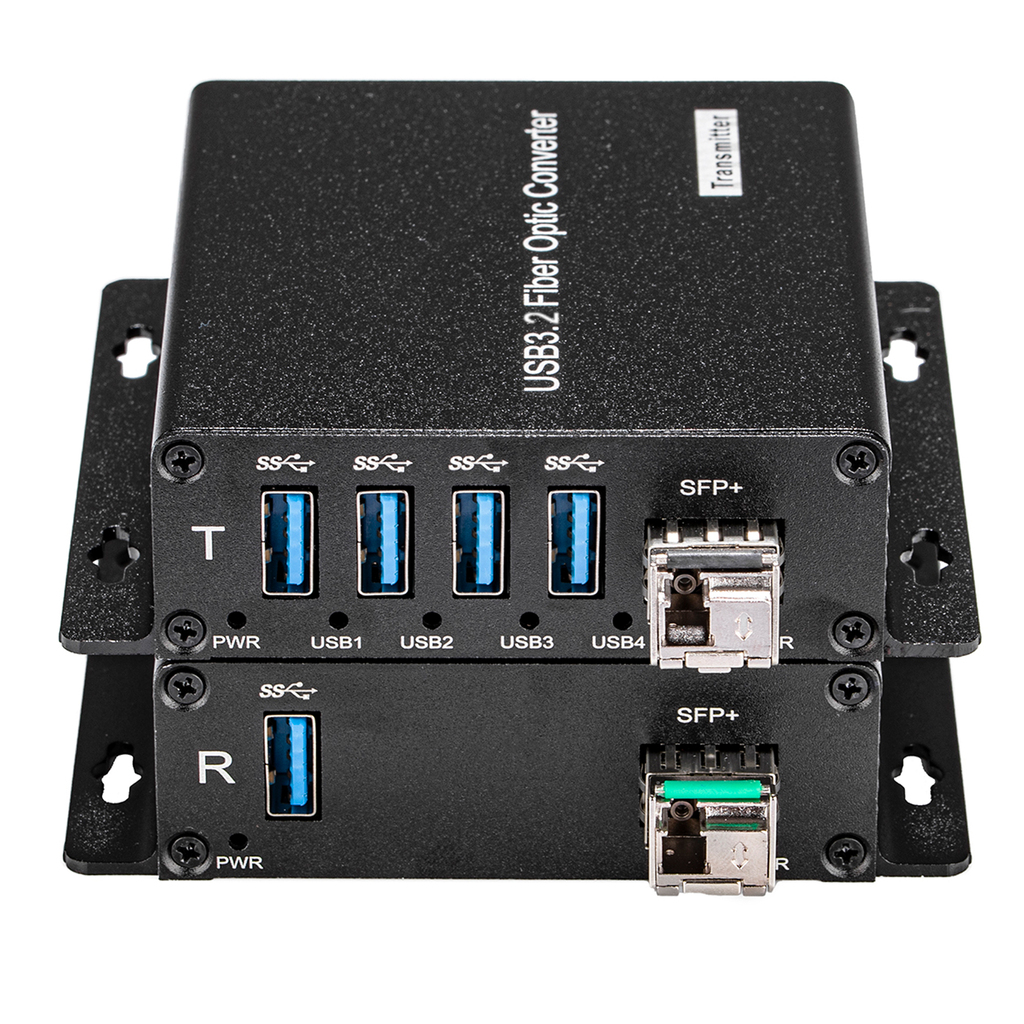
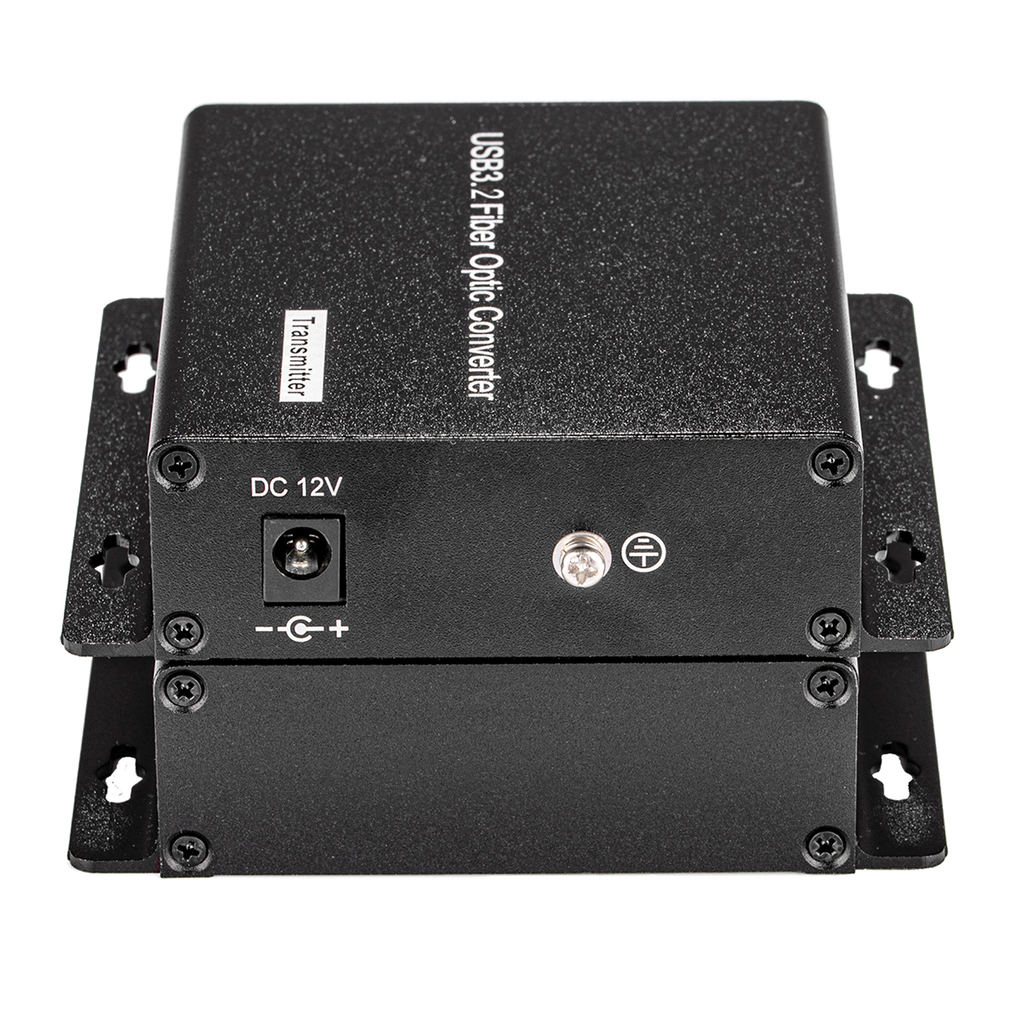
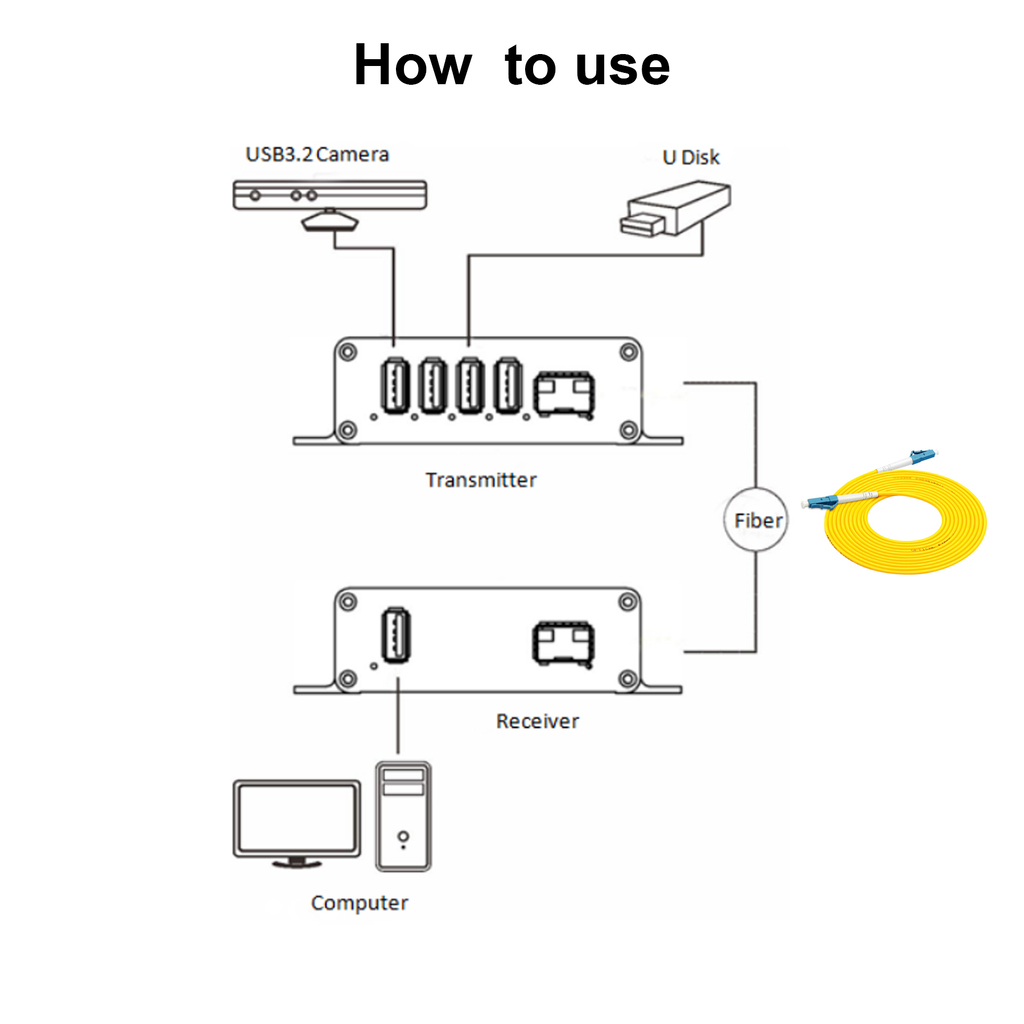
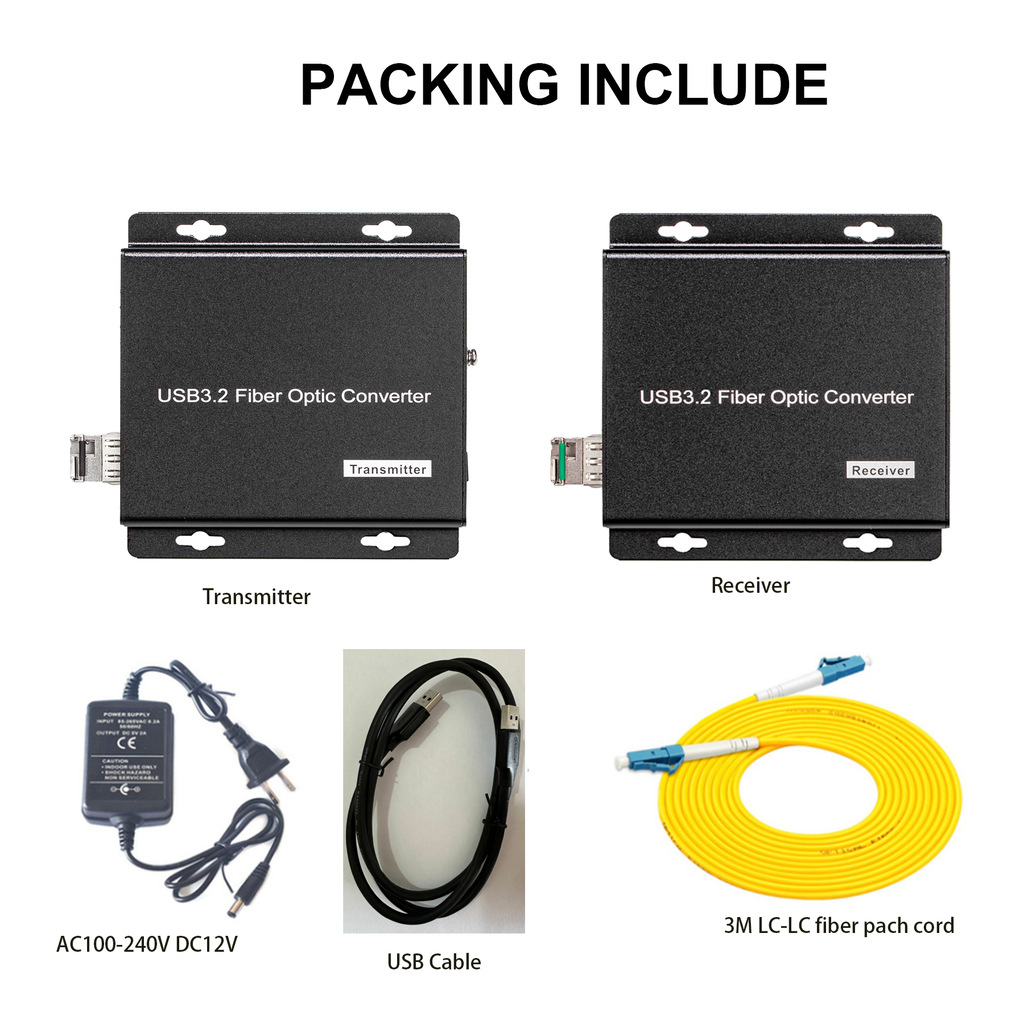
Feature:
1.Complies with the general serial bus 3.2 specification;
2.Complies with USB power delivery 3.2 Gen 1 specification;
3.Supports SuperSpeed Plus (10G bps),SuperSpead (5G bps) rate;
4.Meet the USB Type-C ® standard;
5.Internal USB PHY uses advanced CMOS process to achieve low power consumption;
6.Support 4 channels independent configuration of USB3.2 signal input;
7.Support PWM LED status indicator;
8. backward compatible with USB3.2 Gen 1 (3.0),not compatible with USB2.0 and USB1.1;
9.Plug and play,no driver;
Application :
1. Kinect somatosensory peripheral;
2. Industrial video transmission;
3. Machine vision system;
4. Hd video surveillance system;
5. High-speed data acquisition system;
6. Remote storage;
7. Digital signage and TV wall;
8. Industrial printer system;
1. The host optical converter (receiver R) is plugged into a USB connector of computer;
2. 12V power adapter is connected to the optical converter (transmitter T) ;
3. Connect the USB device to the optical converter (transmitter T).
Note: After the optical fiber is connected,the indicator is on,otherwise off;after the USB device is inserted and identified,the USB indicator is on,otherwise off.
4. Please do the back-to-back staple fiber test to verify that the function of the equipment is normal before doing long-distance transmission;
5. When a USB device is plugged into the computer,the computer cannot be started normally.
Note: The USB device may be set as the first boot device in the BIOS of the computer boot sequence. You can check the first boot device in the BIOS and set the hard disk as the first boot device.
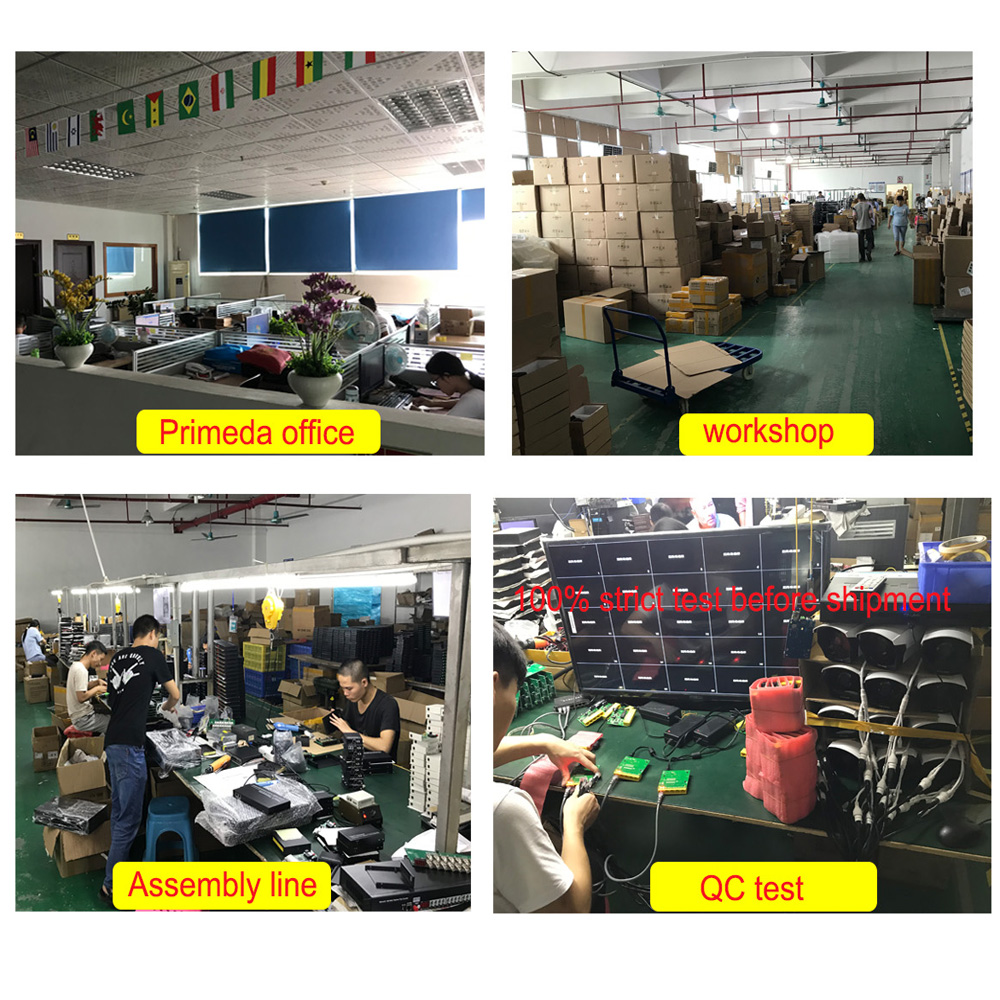
1. This unit extend 4-channel Super Speed Plus USB3.2 signal through one-core fiber optic cable, transmission distance up to 250 meters by single-mode fiber. (Note: No support multimode)
2. USB3.2 fiber optic extender uses a special USB PHY to meet the requirements of USB3.2 protocol,and uses 10Gbps SFP to complete the photoelectric conversion and realize the stable transmission of USB3.2 SuperSpeed Plus ultra-high-speed signal.
3. USB3.2 fiber optic extender consists of a transmitter and a receiver that provides 5V power through the host USB 3.2 type A connector,the transmitter is powered by an external power supply and supplies power to the USB3.2 device through the USB3.2 A type connector.
NOTE:
1. Note that the bandwidth of 10Gbps is not 10Gbps divided by 8 to get 1250MB/s,it uses the same 10-bit transmission mode as SATA,so its full speed is only 1000MB/s.
2. Note that 10Gbps (1000MB/s) is the theoretical transmission value. If several devices share a USB channel,the master control chip will allocate and control the bandwidth available to each device.
3. USB-IF released the latest USB naming specification,the original USB 3.0 and USB 3.1 will no longer be used,all USB 3.0 standards will be called USB 3.2,consider compatibility issues, USB 3.0/USB 3.1/USB 3.2 are called USB 3.2 Gen 1 (5G bps)/USB 3.2 Gen 2 (10G bps)/USB 3.2 Gen 2x2 (20G bps).




Feature:
1.Complies with the general serial bus 3.2 specification;
2.Complies with USB power delivery 3.2 Gen 1 specification;
3.Supports SuperSpeed Plus (10G bps),SuperSpead (5G bps) rate;
4.Meet the USB Type-C ® standard;
5.Internal USB PHY uses advanced CMOS process to achieve low power consumption;
6.Support 4 channels independent configuration of USB3.2 signal input;
7.Support PWM LED status indicator;
8. backward compatible with USB3.2 Gen 1 (3.0),not compatible with USB2.0 and USB1.1;
9.Plug and play,no driver;
Application :
1. Kinect somatosensory peripheral;
2. Industrial video transmission;
3. Machine vision system;
4. Hd video surveillance system;
5. High-speed data acquisition system;
6. Remote storage;
7. Digital signage and TV wall;
8. Industrial printer system;
| Technical Indexes |
| Fiber index | |
| Wavelength | 1270-1330nm |
| Rate | 10Gbps |
| Tx power | >-3db |
| Rx sensitivity | >-10db |
| Fiber connector | LC Single fiber |
| USB index | |
| Version | Universal Serial Bus 3.2 |
| Transmission rate | 10Gbps(1000MB/s) |
| USB total load current | ≤2A |
| Supply voltage | 5V |
| Singel USB supply current | >900mA |
| Physical interface | USB3.2 Type A connector |
| Power index | |
| Transmitter input voltage | DC 12V |
| Transmitter power consumption | 1.2W |
| Receiver input voltage | DC 5V |
| Receiver power consumption | 1.2W |
| Mechanical index | |
| The shell metal | Aluminium alloy |
| Product size | 104*104*28mm |
| Net weight | 0.4KG |
| Way to install | Wall-mounted type (desktop type) |
| Color | Black |
| Packing | |
| Material | Kraft paper |
| Package size | 275*220*55mm |
| Gross weight | 0.65KG |
| Other index | |
| Working temperature | -20°C ~75°C |
| Storage temperature | -40℃~85℃ |
| Relative humidity | From 5 to 95% (non-condensing) |
| Sequence of power-on operations |
1. The host optical converter (receiver R) is plugged into a USB connector of computer;
2. 12V power adapter is connected to the optical converter (transmitter T) ;
3. Connect the USB device to the optical converter (transmitter T).
Note: After the optical fiber is connected,the indicator is on,otherwise off;after the USB device is inserted and identified,the USB indicator is on,otherwise off.
4. Please do the back-to-back staple fiber test to verify that the function of the equipment is normal before doing long-distance transmission;
5. When a USB device is plugged into the computer,the computer cannot be started normally.
Note: The USB device may be set as the first boot device in the BIOS of the computer boot sequence. You can check the first boot device in the BIOS and set the hard disk as the first boot device.


